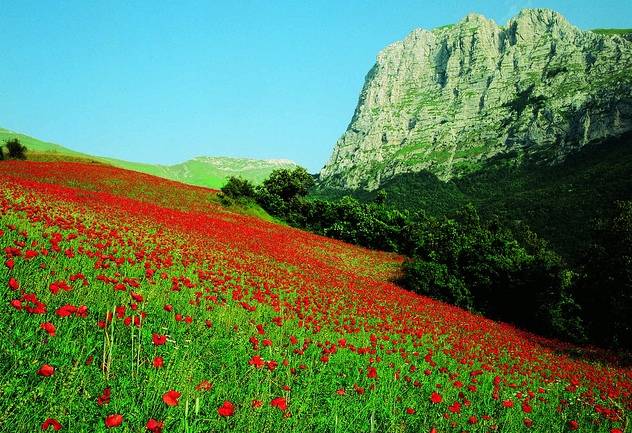Le Marche. An Infinite Discovery.
Back in 2005, The New York Times’ Christopher Solomon was the first to pitch the idea that Le Marche region was to become the new Tuscany. In the few years that have passed since his story was published, Solomon has been proven correct.
The American interest in Le Marche’s beauties has grown increasingly, to the point that the region was classified among the Top 5 Places to Retire Abroad by the American Association of Retired Persons.
Le Marche, though, is not just “a country for old men”, but rather an ideal and enticing destination for visitors of all ages.
With its millenary history and heritage, its culinary and craftsmanship traditions combined with a vivacious cultural scene and with the friendliness and open-mindedness of its people, Le Marche attracts all sorts of visitors from all over the world.
The region’s most recent advertising campaign promises its visitors an “infinite discovery”, quoting the timeless verses of Giacomo Leopardi’s most famous poem, “L’Infinito” (The Infinite).
Significantly, the chosen testimonial of the campaign is the American actor Dustin Hoffman, filmed while rehearsing his interpretation of the poem in the Ventidio Basso Theater in Ascoli Piceno, as well as in the region’s breathtaking countryside, passionately struggling with his Italian pronunciation of Leopardi’s words. (Watch video)
The“calf” of Italy, Le Marche is located under Emilia-Romagna and over Abruzzo. It faces the Adriatic Sea and is separated by the Apennines from the better known, more pricey, and packed with tourists and second-homers, Umbria and Tuscany.
The name of the region says much about its richness and variety: Le Marche, in fact, is a plural name, from the German word “Marks”, borderlands, which defines the region since the barbaric invasions in the IV century AC when the Marches of Ancona, Camerino and Fermo were created.
A part of the Papal States, the region’s distance from Rome allowed local lords to rule the major cities as free communes. Many roccas and castles such as the Brancaleoni castle in Piobbico, the Gradara castle, the Malatesta and Pia fortresses in Ascoli Piceno, the feudal castles in Macerata and the Rocca Roveresca in Senigallia, just to mention a few, represent the tangible signs of this phase of the region’s history.
Among the most illustrious families ruling over Le Marche were the famous Montefeltros of Urbino. Under the Duchy of Federico II, the construction of the Palazzo Ducale was started, and world renowned artists of the Renaissance such as Piero Della Francesca and Raphael were able to flourish in the city. Urbino’s historical center was listed as UNESCO World Heritage Site in 1998.
As far as natural beauties are concerned, Le Marche presents an incredible diversity.
With two national parks (Monti Sibillini, Gran Sasso e Monti della Laga), four regional parks (Sasso Simone e Simoncello, Gola della Rossa e di Frasassi, Monte San Bartolo, Monte Conero), and four natural reserves (Abbadia di Fiastra, Montagna del Torrichio, Gola del Furlo e Ripa Bianca), Le Marche is a paradise for hikers and climbers.
Beach bums won't regret a holiday in Le Marche either, as the region presents over 180 kilometers of sandy shores, rocky beaches and bays.
Le Marche’s inland hilly territory, and the mild climate of the region, offer the ideal conditions for the cultivation of grape vines and olive trees, which are used to produce quality wines and oils.
Le Marche’s olives are also widely used for a gourmet appetizer treat that Italians are extremely familiar with: the so called “Olive Ascolane” (olives the Ascolan way, from Ascoli Piceno where the recipe was invented). The olives, usually the Tenera Marchigiana kind, are pitted, stuffed with ground meats, battered and fried.
If the easiest way to reach a man’s heart is through his stomach, that is particularly easy when Le Marche’s quality cheeses such as the Casciotta are involved. A very curious rumor whose origin is lost in time says that Michelangelo the sculptor was so fond of Casciotta that he acquired some farms in Le Marche not to ever run out of it.
On a more romantic note, Johann Wolfgang Goethe’s memory of his stay in Le Marche, the one of the “most beautiful sunset in the world”, is yet another invitation for you to visit the region and experience its magic for yourself.
Free samples of typical products from Le Marche will be available at Di Palo on Friday, January 13 (from 5 to 8 pm) and Saturday, January 14 (from noon to 8 pm). Experience them also at Eataly (Eccellenze corner) on Saturday, January 14 from noon to closing. Don’t miss it!







































i-Italy
Facebook
Google+
This work may not be reproduced, in whole or in part, without prior written permission.
Questo lavoro non può essere riprodotto, in tutto o in parte, senza permesso scritto.